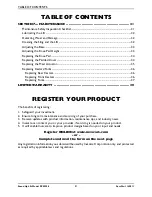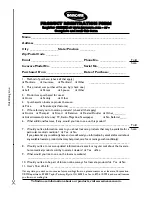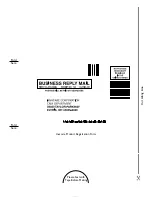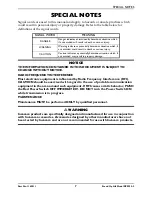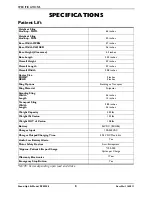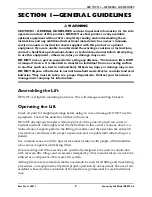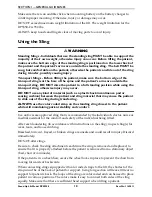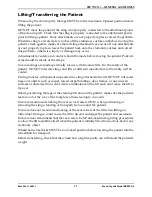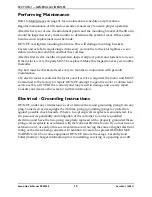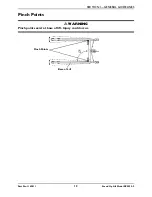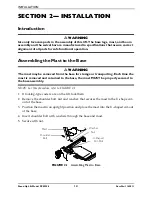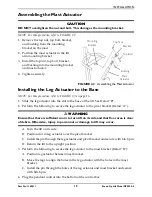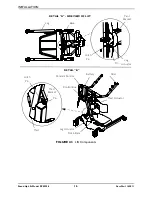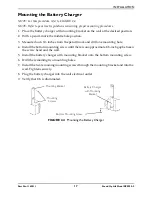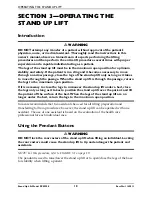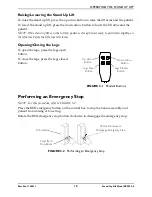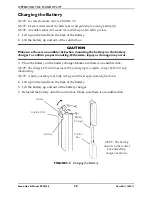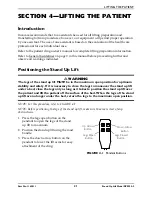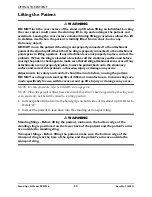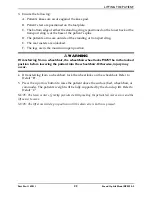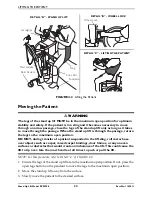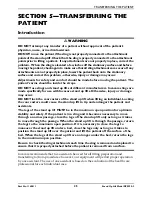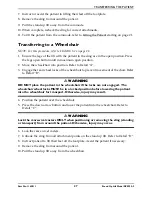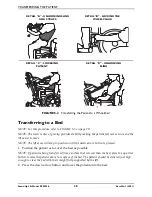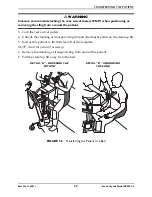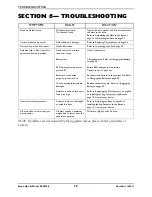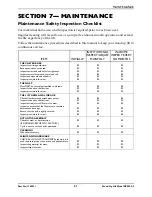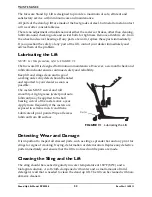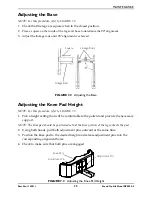
OPERATING THE STAND UP LIFT
Stand Up Lift Model RPS350-2
18
Part No. 1145811
SECTION 3—OPERATING THE
STAND UP LIFT
Introduction
WARNING
DO NOT attempt any transfer of a patient without approval of the patient's
physician, nurse, or medical assistant. Thoroughly read the instructions in this
owner's manual, observe a trained team of experts performing the lifting
procedures and then perform the entire lift procedure several times with proper
supervision and a capable individual acting as a patient.
The legs of the stand up lift must be in the maximum open position for optimum
stability and safety. If the patient is in a sling and it becomes necessary to move
through a narrow passage, close the legs of the stand up lift only as long as it takes
to move through the passage. When the stand up lift is through the passage, return
the legs to the maximum open position.
If it is necessary to close the legs to maneuver the stand up lift under a bed, close
the legs only as long as it takes to position the stand up lift over the patient and lift
the patient off the surface of the bed. When the legs of the stand up lift are no
longer under the bed, return the legs to the maximum open position.
Invacare
recommends
that
two
assistants
be
used
for
all
lifting
preparation
and
transferring
to/from
procedures;
however,
the
stand
up
lift
can
be
operated
with
one
assistant.
The
use
of
one
assistant
is
based
on
the
evaluation
of
the
health
care
professional
for
each
individual
case.
Using the Pendant Buttons
WARNING
DO NOT lock the rear casters of the stand up lift when lifting an individual. Locking
the rear casters could cause the stand up lift to tip and endanger the patient and
assistants.
NOTE:
For
this
procedure,
refer
to
FIGURE 3.1
on
page
19.
The
pendant
is
used
to
raise/lower
the
stand
up
lift
or
to
open/close
the
legs
of
the
base
for
stability
when
lifting
a
patient.

